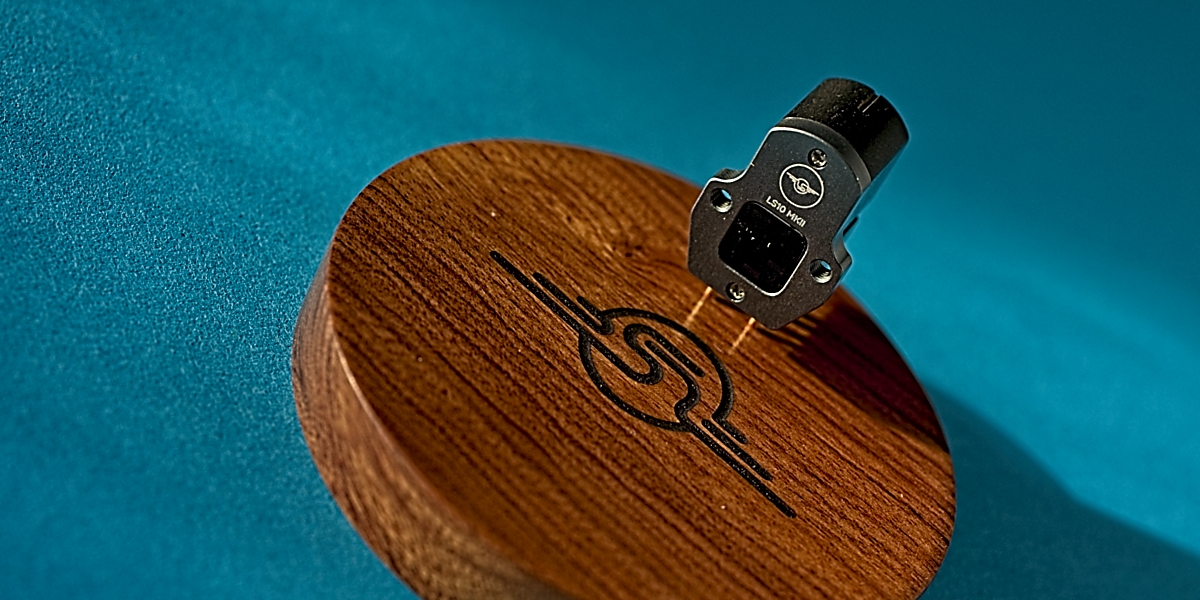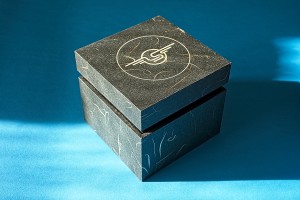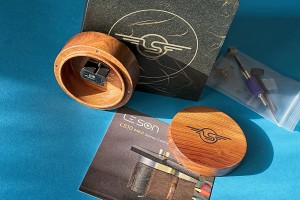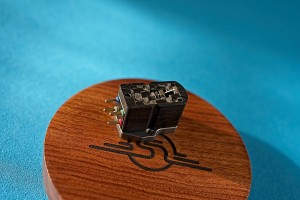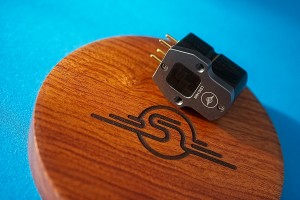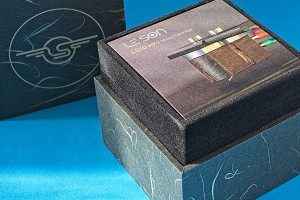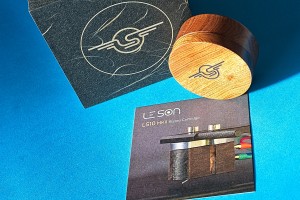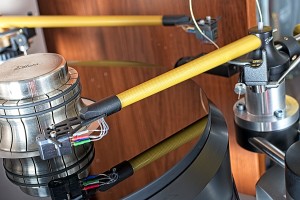For a huge vinyl record fan like myself, one without particularly deep pockets, I may add, a reasonably priced low-level MC cartridge always sounds very interesting. If that’s something you’re after as well, let me introduce a product I found particularly rewarding, another hidden gem, Le Son LS10 MKII.
Introduction
Let me start this review in a bit unusual way because it is an important aspect of the reviewed product, one that you need to understand from the start not only if LS10 MKII represents ‘your’ price range but also if you’ve been looking into pickups 2 or even 3 times more expensive. As you probably realize, there are several approaches to promoting and selling your products. In the audio industry, it usually involves a manufacturer somewhere out in the world and intermediaries between him and the end users. The intermediaries are usually distributors, one or more for a country, plus several local dealers.
Their role is quite important because while it is the manufacturer who comes up with an idea, designs, develops and manufactures a component, it is the distributors and dealers who present them directly to potential buyers, often participate in local shows, organize presentations, reviews, and so on. It also means that they have to be rewarded for their services, which in turn affects the final price any customer has to pay.
Some, only a handful actually, at least that I know of, manufacturers take a different, in many ways simpler approach – direct sales. One example of such a manufacturer whose business model has always been based on direct sales that comes to mind should be familiar to our readers – it is LessLoss. They make cables, power-related products, and also a DAC. In other words, rather small, light products, that can be easily (and relatively cheaply) shipped to anywhere in the world, and, which is also quite important, are not very expensive.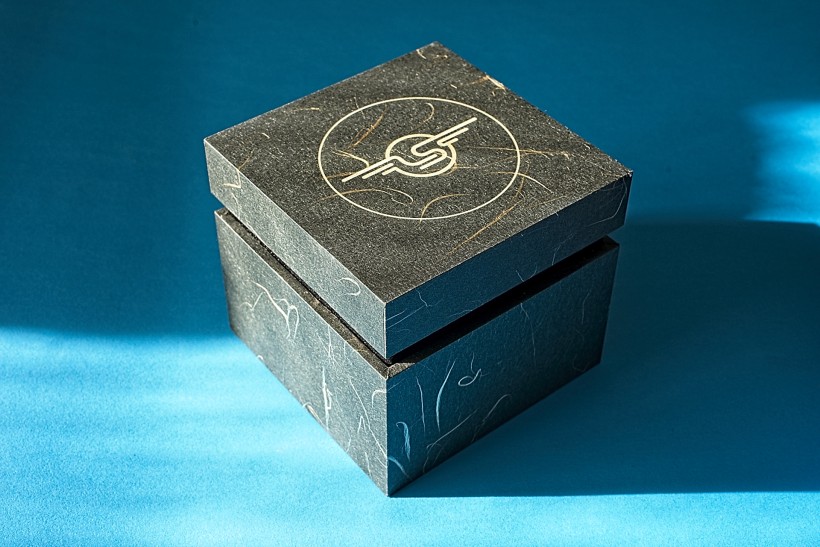
With such a business model manufacturers can offer lower, more attractive pricing without downgrading quality or performance but it has some downsides as well. Customers, at least a vast majority of them, have to purchase products from such manufacturers without having a chance to listen to them at some local dealer’s showroom or home, or in other words, without assessing their performance. That is why a period of ‘money-back guarantee’ is quite crucial in this business model. You pay for the product, the manufacturer ships it to you and then you have some time to decide whether you want to keep it.
Le Son with its headquarters in Shanghai, to offer their cartridges at quite friendly prices decided to take the very same, direct sales-based approach. They make cartridges and some cables and you can buy these directly from the manufacturer. Both cartridges and cables are quite small, light, and easy to ship, so the logistics part is relatively easy. What’s not that simple when it comes to pickups is a ‘money-back guarantee’, as they are very fragile and easy to damage components if not handled (and/or set up) properly. So there is a risk on both sides.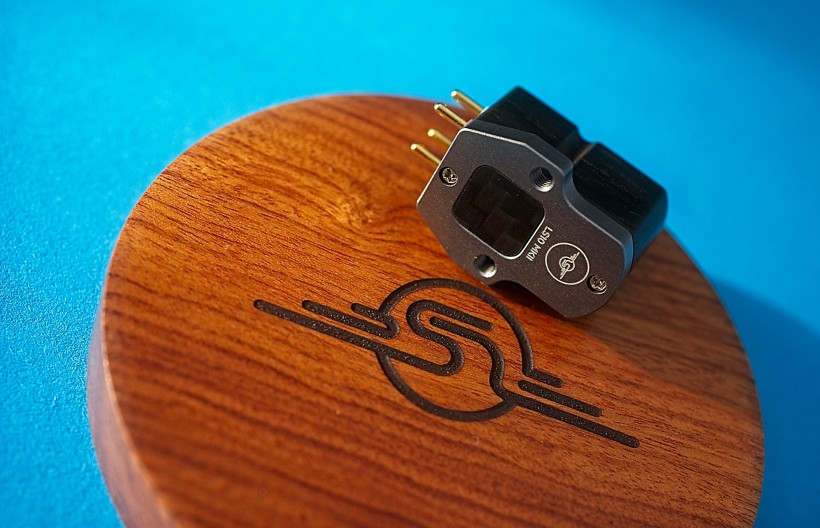
Yet, this particular manufacturer does offer a 60-day money-back guarantee period that allows customers to order a cartridge and try it out, and if it doesn’t satisfy their expectations they can always send it back (within this period and as long as the cartridge is not damaged in any way) and get their money back. Considering also the fact, that the price of 1199 EUR (that’s the standard price, although when I got the pickup manufacturer offered a 300 EUR price reduction for a limited time) includes also VAT and customs fees it could make it a particularly interesting product for many vinyl lovers, especially the ones without particularly deep pockets or just unwilling to spend 5 or 10 thousand EUD/USD for a cartridge.
Now, remembering the fact, that the direct sales model allows manufacturers to avoid intermediaries, it also means that the final price can be significantly lower than it would have been if sold using a traditional model of distribution. So while spending 1200 EUR for a cartridge you can’t test before paying for it may still not be the easiest possible decision when you factor in that the very same pickup sold via a distribution network would cost you 2 or most likely even 3 times more should sound quite encouraging, wouldn’t you say?
One of the key elements of the success of any company that decides on a direct sale business model is word of mouth. Professional reviews help to spread the word as well, but it is the satisfied customers who actually ‘risk’ their own money and when happy with the product tell their friends, who tell their friends, and so on, who are the key to success. I bring it up also because one of such happy customers brought the Le Son brand to my attention.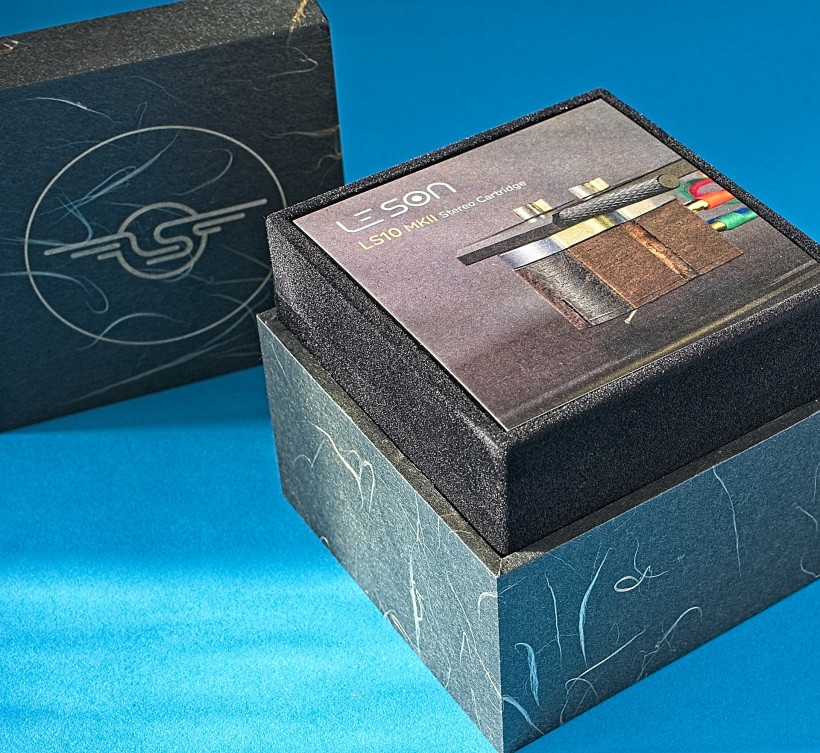
And by the way, another critical element of direct sales (but also any sales) is how the manufacturer solves issues, should they arrive. In the case of the man I’ve mentioned, the one who recommended Le Son to me, there was an issue with his cartridge that was caused by him (twice!), and yet the manufacturer solved it in a very customer-friendly way. That’s another thing to keep in mind as not all brands follow suit. One more thing. In most cases, the cost of retipping any MC cartridge can reach up to 70-80% of the price of a new one, yet Le Son offers a way more attractive pricing of 390 USD including shipping and customs duties!
As if it wasn’t enough to at least pick your interest, Le Son has still more to offer. As you can read on the manufacturer’s website, despite the fact, that the shape of the LS10 MKII makes setup relatively easy, the manufacturer still offers comprehensive advice regarding installation in the customer’s system, and setting it up including suggestions regarding optimal VTF or VTA for a particular tonearm. That’s one more thing that makes Le Son stand out among other manufacturers further emphasizing their customer-oriented approach.
After the recommendation, I did a quick search on the web, and everything I read encouraged me to contact Le Son. I sent them an email asking if they would be willing to send the LS10 MKII to me for a review, and Mr. Gregory de Richemont, one of the two men behind the company, and its general manager, kindly answered. Several days later a small package arrived at my doorstep and the review was on.
You can find all that information on the company’s website, but let me share some of it here as well for those who don’t have time to go and check out another website. Let’s start with the name “Le Son”. The name given to the brand translates from French to “The (absolute) Sound”. It was chosen to: „mark a quest to create a sound system that transcends music playback, offering an emotionally compelling sound experience.” Reading on, I found out that Gregory and I have some things in common. He calls himself a „child of the ’70s”, and so am I.
His musical awakening came with a gift, Thorens TD150 MKII turntable and a trove of vinyl records, mine with a less sophisticated record player owned by my parents and whatever (mostly so-called ‘musical postcards’, or poor quality rectangular singles) playable pieces of plastic they owned. As he admits, what truly started his passion for music and high fidelity reproduction thereof was Pink Floyd’s „The Dark Side of The Moon” album, and the very same band was the one that my father passed on to me to ignite my love for music in general and rock in particular.
From the website, one can also learn, that Gregory was a corporate man until he decided it wasn’t for him anymore (I know the feeling). Instead, he formulated a new mission: „to forge an emotionally compelling sound experience. The result was a sanctuary of sound in Shanghai – a studio dedicated to the restoration of analog audio gear and the hosting of listening sessions to share the power of high-fidelity sound.” Later he met Dr. Ted Tsai, a renowned expert in audio design, at an International Audio Show. Their „shared passion for music and commitment to high fidelity sound forged a bond and a unified vision to craft analog audio equipment that brings the soul of music to life.”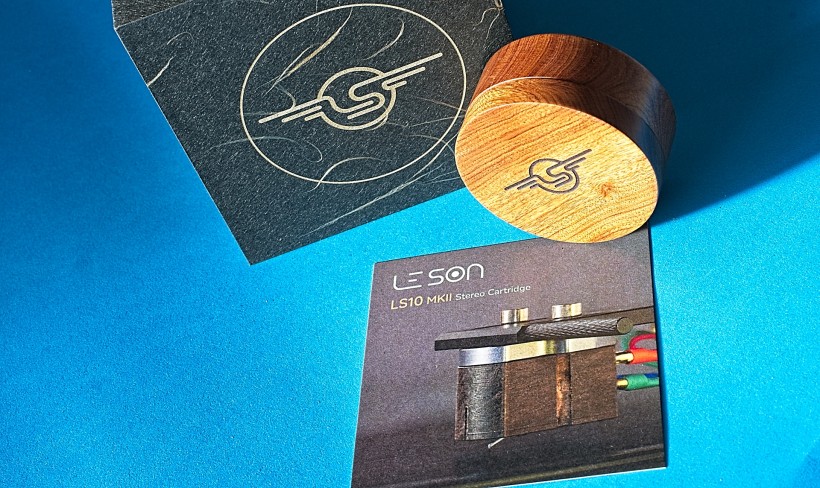
The result of their work is, as of today, two cartridges of their own design, the tested LS10 MKII and the high output SL1 MKII plus a custom version of the legendary Denon DL 103, a headshell washer and silver phono and interconnect cables. As you can see the lineup is not extensive, but over the years I’ve learned to appreciate manufacturers who focus on quality rather than quantity so in my book it is a pro rather than a con, at least as long as the LS10 MKII could prove its worth.
Design and Features
I have to say, that despite attractive pricing, Le Son took it upon itself to impress customers right from the start with the box their cartridge comes in. It is made of a thick carton and yet it is very elegant with the company’s logo and sort of golden threads spread across the whole surface of the dark-colored box. Inside one finds a small cylinder-shaped wooden box holding the cartridge. Take note – there is no stylus guard on so be careful when taking it out! Apart from it, there is a set of accessories – a very handy hexagonal screwdriver, stylus brush and guard (! – it is there so you can use it if you choose to), and three sets of mounting screws (of different lengths), each paired with washers.
The cartridge features a body made mostly of ebony wood. Judging by the photos provided by the manufacturer on his website, originally the whole body was made of wood, but the latest tested version features a metal (aluminum) top plate and what looks like carbon fibre inserts (manufacturer calls it a socket) visible on the top and bottom side. The shape of the pickup’s body is quite regular which makes the setup relatively easy, and the threaded holes allow for simple installation in a headshell.
Obviously, other key elements of every cartridge are a stylus and a generator. Most manufacturers keep details of their designs secret revealing only a few details. What we know about LS10 MKII is that it features a nude Shibata stylus and a boron nitride ceramic cantilever. The manufacturer chose the latter over the more commonly used boron carbide because of its lower density. The choice of the material and a tailored design of the cantilever result in a lower moving mass of the generator which translates into an „increase in the accuracy and speed of vibration transmission.” The expected effect would be a particular clarity and precision of the presentation.
As already mentioned, this special cantilever is paired with one of the most famous and highly regarded types of stylus, Shibata. It was developed by Mr. Shibata, hence the name, and patented by Victor Company of Japan (JVC) in 1973. It is a line contact stylus that offers excellent tracking, and minimizes record wear due to a reasonable VTF – in this case, the recommended value is 1,9 g. As this is a Moving Coil design, the cantilever and stylus are paired with coils made of 6N Copper.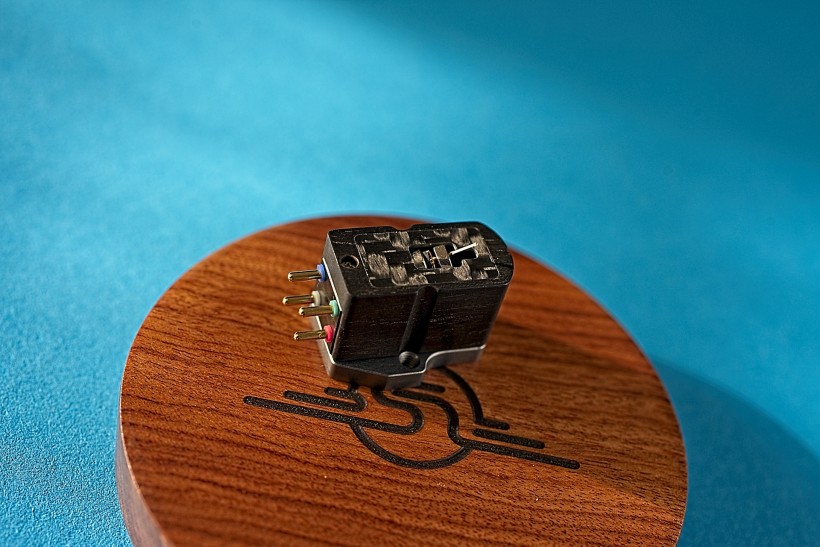
The generator features Le Son’s development called the ECC System. The ECC stands for Eddy Current Cancellation which is self-explanatory and, according to the manufacturer, it is „…a technological breakthrough that significantly enhances the cartridge’s performance by effectively neutralizing Eddy Current forces.” You will find a detailed explanation of why canceling eddy currents in a cartridge is the key to a better sonic performance HERE. OK, let’s get to it.
Sound
Le Son LS10 MKII cartridge was tested in my reference system installed initially in the J.SIKORA KV (and later in J.SIKORA KV12 MAX ZIRCONIUM SERIES tonearms. With the latter, I also used an interesting accessory I brought back with me from the last Munich High End Show, namely Korf CB-A01, an alumina ceramic spacer. Both arms were installed on my J.Sikora Standard Max deck and connected for most of the time to my ESE LAB NIBIRU MC phono stage. For some time I also used Accuphase C-47 and Linear Audio Research LPS-2 loaners instead. The description of a complete system can be found below the review.
The manufacturer’s website still (as of the time I am writing these words) recommends a break-in period of as many as 30 hours for the LS10 MKII, which is already less than for most other pickups (let me recall the 100 hours required for Van den Hul The Frog, or 50 hours recommended by most manufacturers for their products). Gregory though, told me that 12 hours would be enough with the new, MKII design to already achieve a very good performance.
Twelve hours still means one has to play at least 18-20 albums from start to finish. And so I played some music while writing the introduction to this review, with every intention to treat it as a background, playing at quite a low level to keep it from disrupting my focus. The problem was that instead of choosing some random album with some not particularly interesting music, I started with one of my favorite Mozart’s operas, namely „Le Nozze Di Figaro” (Musica Aeterna conducted by Currentzis), and later moved on to a four-disc live album by amazing Kate Bush. Yeah, in hindsight, it was not the best possible choice for background music regardless of the cartridge’s state of break-in.
Why was that? Because the very ‘fresh’, or straight out of the box Le Son wasn’t going to let me work uninterrupted. I love both, Mozart and Bush, and the LS-10 MKII played them both, particularly the latter (maybe because it came second so the pickup was already a bit more broken in), in a way that simply begged for my attention. It was interesting to observe how quickly the break-in process progressed, as with each disc of „Before The Dawn” listening became more and more irresistible and engaging. So yeah, the writing had to wait in a hope for some less interesting albums, because the music I decided to play just pulled me right in. Having witnessed the progress in sound quality when listening to Kate Bush I also made a note to myself to come back to Mozart later on as I expected it to sound even better (as if it wasn’t great already).
For now, though, I couldn’t help but focus solely on the performance, or should I say, a stunning spectacle playing out right in front of me. It wasn’t about it being the best sound I’d ever heard but rather already being so surprisingly (and objectively) good. It was natural, and engaging right from the beginning of the break-in period. There were still some downsides to it – the analytical side of my brain wanted a bit more resolution, even more (promised by the cartridge’s premise) transparency and clarity, it wanted the presentation to be more open, with more extension in both range’s extremes. At the same time, based on experience, it also told me that all these elements would improve once the pickup is fully broken in.
For now, though, what was so convincing, so irresistible, and enchanting about this presentation, was the already quite rich, open, colorful, and highly expressive midrange. It was the stunningly natural and accurate Kate Bush vocals, and the music around her weaving the moody atmosphere taken straight from her studio albums and so incredibly well reproduced on the stage. Also other voices, and there are a lot of them on this album, sounded not only natural but also present enhancing the feeling of participation in the event.
Long story short, the presentation was still lacking a bit (but less than expected) in some areas (although less and less with each disc), yet importantly the ones promising to improve gradually within the break-in period. In other areas though, it already excelled, particularly, as already mentioned, in the midrange. The longer I listened to the Le Son LS10 MKII, the less noticeable were the ‘lacking’ parts, and the more complete, and therefore better in audiophile’s, but also music lover’s terms, was the presentation as a whole. Despite the overall quality gradually improving, the elements that attracted my attention from the start, I mean how natural, smooth, and coherent the sound was, were still key features that the whole performance sort of revolved around.
To get back to work, already quite late in the evening, I reached for another multi-disc release which, for whatever reason (as it still meant traveling back and forth to the turntable to flip the sides or discs), seemed easier to play without getting distracted, than five separate albums. This one was David Gilmour’s „Live in Gdansk”. Despite the late hour, and quite a low volume level, already the second track, „Time” (I forgot it was to come so early in the track list) inevitably attracted my attention. The alarms going off around would do that to a man at any time of the day. And they were quite convincing, piercing the ears (confirming that the upper part of the range started to fully develop but also fill in and open up) and rushing some adrenaline through my veins. So again, instead of focusing on the introduction to this text, I had to put away my laptop and let myself immerse in the music.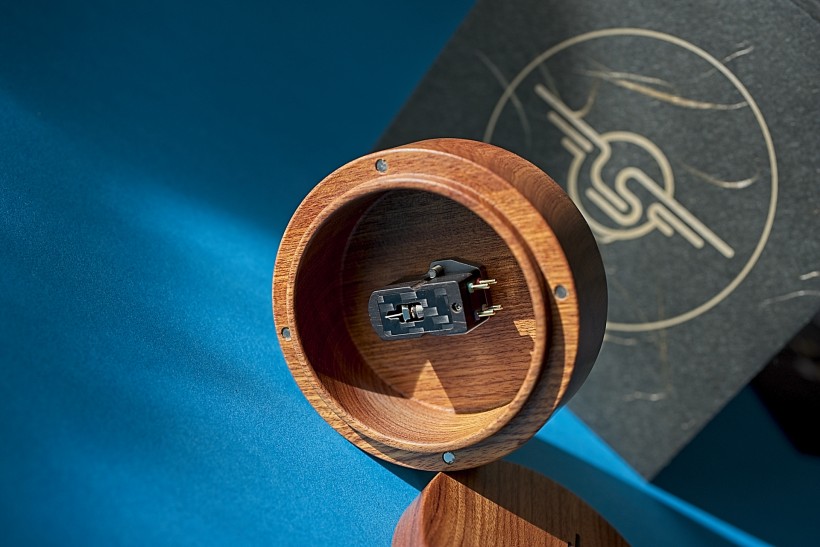
From what was already absolutely clear, Le Son LS10 MKII is an incredibly musical performer. Even after the recommended 12, or 30-hour break-in period, this incredibly important (at least for me) feature prevailed. Other elements of the presentation, as expected, improved step by step throughout the process, to make the experience more complete, more refined, and objectively even better, but the focus was still on offering this unique experience, that communing with music is for all of us, music lovers. It is supposed to move us, and touch us in its unique way, and LS10 MKII started to prove it was fully capable of doing just that.
What I mean by that is that it established this special connection between the performers, their music and emotions, and the listener (me). In other words, Le Son’s cartridge proved to be a skillful communicator, effortlessly conveying the very essence of music, including all the emotions, and all the drama it channels. As such though, once again, Gilmour’s album was a poor choice for background playback as it wasn’t going to let me focus on my work. Hence the introduction and design & features parts had to wait until I turned the music off completely.
The next day I started with one of the albums that sooner or later always come up when I test any vinyl-related components – Jacques Loussier’s „Pulsion”. It is a seemingly very simple recording, just drums, and piano, so no biggie, right? Wrong! The dynamics, energy, and fast pace on this album are stunning. Some cartridges that, like Le Son LS10 MKII, are first of all musical and natural, hence a bit warm sounding, can’t deliver this ‘simple’ music vigorously enough. The tested one though, did an almost as impressive job as my Air Tight PC-3. On the one hand, it presented the piano in a deep, powerful, tuneful way leaving no doubt in my mind that I was listening to a huge, powerful, rich-sounding instrument. I loved the dynamics, the pace, and the immediate leading edge, but one followed by rich and long sustain and decay.
On the other hand, I was impressed with the clarity of the performance, of how clearly all the intricacies of Loussier’s performance were delivered. It was not all about the power and energy, but rather those features were built upon the great insight of this relatively inexpensive (compared to many way, way more pricey competitors I reviewed) cartridge into micro-dynamics, into tiniest tonal contrasts, acoustics of the instruments and of the recording. All the necessary ingredients were there to ‘cook’ a delicious, refined musical feast and as a result, I loved and cherished every little spoon of it served by LS10 MKII.
The tested cartridge seemed equally fine with every album I played over the weeks of this test regardless of the genre. Tracking was spotless, and so was the information retrieval from every groove. Once the break-in (quickly) ended, the lower and upper parts of the range nicely extended and filled in, thus completing the mids beautifully. I believe that the completeness and coherence of the presentation belong to this pickup’s strongest qualities. It is not a performer that stuns listeners immediately with particular qualities, but takes a different approach and in the long run, it amazes with a rich, smooth, cohesive delivery. It is fully capable of transforming every recording, maybe apart from the truly bad ones, into a touching, immersive experience.
Yes, I loved it best with acoustic music, vocals, slow-tempo rock, and blues, but it did its job surprisingly well (as despite the best efforts it was hard to forget how little it cost compared to what it had to offer) also with large symphonic music and rock. It didn’t mind complex, multi-layer recordings, it was not affected by huge, powerful orchestra’s tutti, and it brimmed with energy effortlessly following any pace and rhythm when a rock band went crazy on stage. There isn’t really much more one could want from a cartridge.
To be clear, by all that I don’t mean that it is the best one money can buy, as, for example, my Air Tight PC-3 is a bit more resolving and touch more transparent, and the lowest part of the range is tighter, and the DS Audio Master 3 (system – pickup plus phono stage) tested at the same time adds even more refinement particularly on a micro level, and an overall feeling of effortlessness on top of all the Air Tight’s advantages. But these two (DS in particular) cost way, way more than Le Son.
Comparing it to also recently reviewed Van den Hul The Frog or Skyanalog G2 MK2, despite the former being some 2,5 times more expensive, and the latter priced some 50% higher, choice between them would not be as simple as deciding which one is better, but rather which set of qualities better complements a particular system and/or sonic preferences of a particular user. The point is, when it comes to Le Son LS10 MKII you have to remember it punches way above its price range so what you get with it is not only excellent, versatile, incredibly musical performer, but also one of the best price/performance values in the analog world.
So yes, color me impressed with how much even the regular price of 1190 EUR can get you. Le Son LS10 MKII is one of those hidden gems of the audio industry and so from now on I will recommend it to anyone asking for advice on what cartridge from, say, 800 (if they can spend a bit more) to 2 – 2,5, or maybe even 3 kEUR range they should buy. It does offer at least the same performance level as almost any cartridge from this wide range (in most cases a higher one), and whatever amount you spare by buying it instead of a more expensive competitor, you can use it to get more records for your collection. It’s a win-win situation!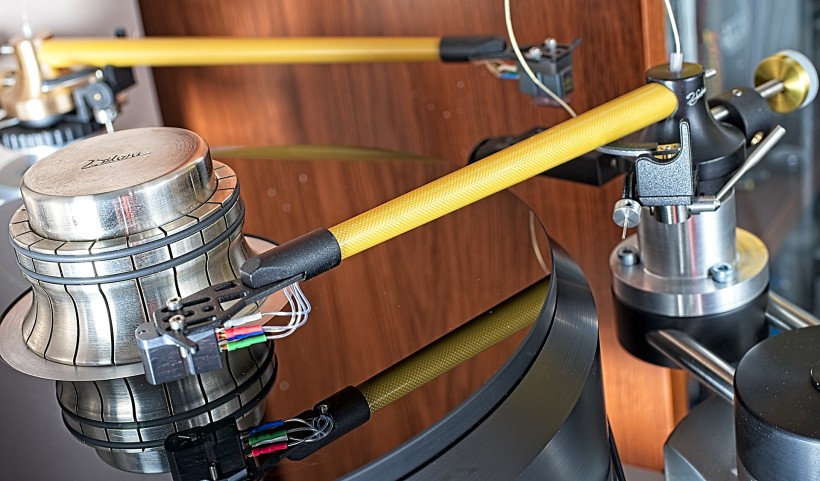
Summary
I’ve spent a lot of time with Le Son LS10 MKII, which is not always the case with loaners. It gave me a chance to see it fully bloom and spread its wings, and I have no choice but to admit, that it is an impressive cartridge and an outstanding performer. It’s focused on music and emotions embedded in it regardless of genre and recording and pressing quality, yet it differentiates both performances and releases really well. It clearly benefits from the outstanding quality of both, yet if the latter is slightly lagging behind it still knows how to deliver performers’ intentions to reach the listeners and move them.
If you’re a more detail/resolution/clarity-oriented audiophile worry not. You’ll get all that with Le Son LS10 MKII in a perfect balance, meaning without the scale tipping towards the aforementioned features and trust me, you will appreciate it in the longer run. The clarity and resolutions of the presentation are its undeniable qualities although they serve a higher purpose, so to speak. They are not goals to achieve but mere means to an end, with the latter being a beautifully natural and accurate presentation of whatever music you decide to play. Go ahead and give it a try – it is worth it!
Price (when reviewed):
- LE SON LS10 MKII: 1.190 EUR
Manufacturer: LE SON
Technical specifications (according to the manufacturer):
- Cartridge Type: Moving Coil (Stereo)
- Body: Aluminum & Carbon Fiber Socket, Ebony Wood Casing
- Stylus: Diamond, Shibata V Shape
- Cantilever: Boron Nitride Ceramic Rod
- Coils: 6N Copper
- Weight: 7.9 grams
- Output Voltage: 0.40mV at 5cm/s
- Internal Impedance: 6.8 ohms
- Frequency Response: 15 – 45,000 Hz
- Channel Separation: Better than 30dB at 1kHz
- Channel Balance: Better than 0.5dB
- Tracking ability: 80μm at 315Hz with 2g Tracking Force
- Dynamic Compliance: 15μm/mN
- Recommended Loading: 75 ohms minimum
- Recommended Vertical Tracking Force (VTF): 1.7 – 2.1 grams
- Reference Vertical Tracking Force (VTF): 1.9 grams
- Recommended Tone Arm Mass: Medium
- Run-in Period: 30 hours
Associated equipment:
- Digital source: a custom passive server with WIN10, Roon, Fidelizer Pro 7.10, JCAT NET XE, and JCAT USB XE cards with FERRUM HYPSOS Signature power supply, KECES P8 (mono) linear power supply for the server, JCAT USB Isolator
- D/A Converter: LampizatOr Pacific 2 +Ideon Audio 3R Master Time (USB signal regenerator)
- Analog front end: J.Sikora Standard MAX turntable, J.Sikora KV12 tonearm, J.Sikora KV12 MAX tonearm, AirTight PC-3, Audio Technica PTG33 Prestige, phono stages: Grandinote Celio MK IV, ESE Lab Nibiru V 5.
- Power amplifiers: GrandiNote Shinai, Circle Labs M200, Art Audio Symphony II (modified)
- Preamplifier: Circle Labs P300
- Loudspeakers: GrandiNote MACH4, Ubiq Audio Model ONE Duelund Edition.
- Interconnects: Bastanis Imperial x2, Soyaton Benchmark, Hijiri Million, Hijiri HCI-20, TelluriumQ Ultra Black, KBL Sound Himalaya 2 XLR, David Laboga Expression Emerald USB, David Laboga Digital Sound Wave Sapphire Ethernet
- Speaker cables: Soyaton Benchmark Mk2
- Power cables: DL Custom Audio 3D-S-AC Connect, LessLoss DFPC Signature, Gigawatt LC-3
- Power: Gigawatt PF-2 MK2 and Gigawatt PC-3 SE Evo+; a custom power line with Gigawatt LC-Y in-wall cable; Gigawatt G-044 Schuko and Furutech FT-SWS-D (R)
- Network: Silent Angel Bonn N8 + Silent Angel Forester F1 + optical LAN isolator
- Racks: Base VI, Rogoz Audio 3RP3/BBS
- Anti-vibration accessories: ROGOZ-AUDIO SMO40 and CPPB16 platforms and ROGOZ AUDIO BW40MKII feet, OMEX Symphony 3S, Franc Accessories Ceramic Disc Slim Feet and Wood Block Platform, Graphite Audio CIS-35 and IC-35 Premium


